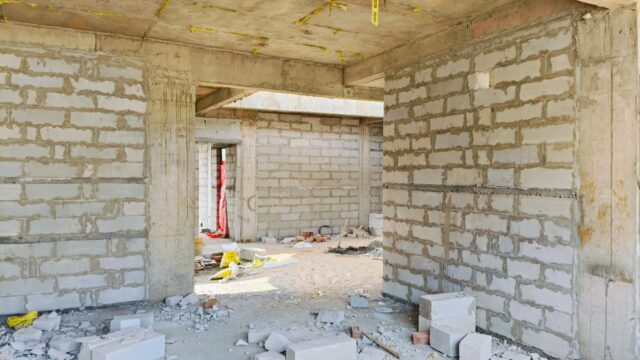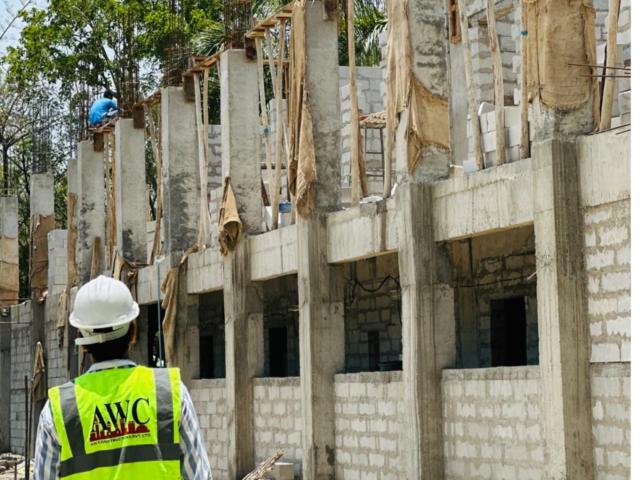
Choosing the right bricks for your brickwork project is crucial to ensuring both the longevity and aesthetic appeal of your construction. Whether you’re working on a new home, a garden wall, or a simple patio, the quality and type of bricks you select can make a world of difference. This comprehensive guide will take you through everything you need to consider when choosing bricks for your next brickwork project.
Understanding the Different Types of Bricks
Before making a choice, it’s important to familiarize yourself with the different types of bricks available. Each type of brick has its unique characteristics and is suitable for specific uses. The most common types of bricks include:
1. Clay Bricks
Clay bricks are the traditional choice and are known for their durability, strength, and excellent insulation properties. They are made from natural clay, which is baked at high temperatures. The result is a brick that can withstand harsh weather conditions and provide an aesthetically pleasing look for both interior and exterior projects.
2. Concrete Bricks
Concrete bricks are made from a mixture of cement, sand, and aggregate. These bricks are often used for their structural properties and can be less expensive than clay bricks. They come in a variety of sizes and shapes and can be used for both load-bearing and non-load-bearing walls.
3. Sandlime Bricks
Sandlime bricks are composed of sand, lime, and water. They are made under high pressure and temperature, creating a smooth, dense brick that is ideal for projects where a smooth finish is required. These bricks are generally used in decorative projects due to their fine finish.
4. Engineering Bricks
Engineering bricks are known for their high compressive strength and resistance to water. These bricks are often used in foundations, sewer systems, and other projects that require a high level of durability. They come in a range of colors and can also be used in decorative applications.
Key Factors to Consider When Choosing Bricks
Once you understand the different types of bricks, it’s time to consider the key factors that will influence your decision. These factors include:
1. Durability and Strength
When selecting bricks, it’s important to choose ones that are strong enough to withstand the stresses placed on them. The strength of a brick is determined by its compressive strength, which is a measure of the pressure it can bear before cracking. Ensure that the bricks you choose are suitable for the load-bearing requirements of your project.
2. Weather Resistance
Depending on the climate of your area, you may need bricks that are specifically designed to resist harsh weather conditions. For example, bricks used in colder climates need to be frost-resistant, while bricks in hot climates should be able to handle high temperatures without degrading.
3. Aesthetic Appeal
Bricks come in a range of colors, sizes, and textures, so it’s important to consider the visual appeal of the bricks, as they will be a permanent feature of your project. Whether you prefer the rustic charm of red clay bricks or the modern look of concrete, make sure the bricks match the overall aesthetic of your design.
4. Size and Shape
Bricks come in a variety of sizes and shapes, each of which can affect the overall appearance and structure of your project. Some bricks are standard-sized, while others are specially designed for particular applications, such as arches or curves. Be sure to choose a size and shape that align with your design goals.
5. Environmental Impact
Sustainability is becoming an increasingly important factor in construction. When choosing bricks, consider their environmental impact, including how they are produced, whether they are made from recycled materials, and their overall carbon footprint.
6. Cost
While you might want the best quality bricks for your project, it’s important to stay within your budget. Prices for bricks can vary depending on material, type, and even location. Ensure you choose bricks that offer the best value without sacrificing quality.
How to Test the Quality of Bricks
Not all bricks are created equal, and it’s important to assess their quality before making a purchase. Here are a few ways to test the quality of bricks:
1. Visual Inspection
Start by visually inspecting the bricks for any cracks, chips, or irregularities. Quality bricks should have a uniform color and smooth finish. Any noticeable defects may indicate that the brick is subpar or damaged.
2. Sound Test
A quick sound test can help you determine the quality of the brick. When you tap a brick with a hammer or another hard object, it should make a ringing sound. A dull sound may indicate that the brick is of lower quality or contains air pockets, which can weaken its structure.
3. Water Absorption Test
To test the water absorption rate, submerge the brick in water for a period of time and then check for any significant swelling or discoloration. A high water absorption rate can compromise the durability of the brick in damp or freezing conditions.
4. Compression Strength Test
One of the most important tests for bricks is compression strength. A brick’s ability to withstand pressure without cracking is vital for its long-term durability. If you have access to a testing facility, consider performing this test, or ask your supplier for strength specifications.
Choosing the Right Bricks for Different Applications
Different brick types and specifications are suited for different parts of a building or structure. Here’s a breakdown of which bricks are best for various applications:
1. Load-Bearing Walls
For load-bearing walls, you’ll need bricks that are strong and durable. Clay bricks and concrete bricks are ideal for these applications, as they provide the necessary strength to support the weight of the structure above.
2. Decorative Features
If you’re working on a decorative feature like a fireplace, garden wall, or facade, you might want to opt for bricks that are more aesthetically appealing, such as sandlime bricks or colored engineering bricks. These bricks offer smooth finishes and vibrant colors that add beauty to the project.
3. Foundations and Substructures
For foundations and substructures, durability is the key. Engineering bricks are often the best choice for these parts of the building, as they offer excellent compressive strength and water resistance, which are essential for withstanding ground pressure and moisture.
4. External Walls
External walls are exposed to the elements, so it’s important to choose bricks that are weather-resistant and durable. Clay bricks, which are frost-resistant and perform well in different climates, are a great choice for external walls.

Conclusion
Selecting the best bricks for your brickwork project requires careful consideration of several factors, including the type of brick, its strength, durability, aesthetic qualities, and cost. By understanding the different brick options and the specific requirements of your project, you can make an informed decision that will ensure both the functionality and beauty of your brickwork. Take the time to test the quality of bricks and choose ones that suit your climate, design, and budget to create a long-lasting, stunning result.
Choosing the right brick for your project is an investment in the future of your structure. With the right bricks, you’ll be able to achieve a solid, durable, and visually pleasing outcome that will stand the test of time.
